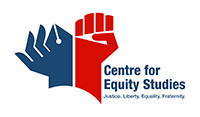Darkness under Lamps:
Urban Slums and Food Entitlements in India
Harsh Mander and V Manikandan
Centre for Equity Studies
2009
The Indian government implements some of the largest food schemes in the world. However, the reach and quality of implementation of these programmes is often most feeble and insufficient in areas that are physically the most proximate to centres of public policy formulation, namely cities and towns. This study seeks to empirically observe and assess the implementation of all existing food, livelihood and social security schemes in various indigent and deprived urban contexts, and based on the findings of coverage and gaps, suggest directions for initial strategies for effective implementation.
EATING ROUGH
Hidden Hunger on City Streets: Searching for Solutions
Harsh Mander and Smita Jacob
Centre for Equity Studies
2010
It is often assumed that hunger defaces only the rural landscape; and that although cities may engender other forms of violence, its colonies, shanties and streets are free of that most terrible form of want – of food for a hungry belly. But we discovered – in a study of homeless people that we undertook over two years in the streets of Patna, Delhi, Chennai and Madurai – hunger to be rampant, and sometimes desperate, even on city streets, although obscured in the smoggy haze of city lights.
HOMELESS DEATHS ON THE
STREETS
Harsh Mander and Smita Jacob
Centre for Equity Studies
2010
In many years of direct work with urban homeless men, women and children, and our research and field work with these populations, one of the most urgent demands that they consistently press is for community kitchens and canteens that supply not free but low-cost nutritious and hygienic hot cooked meals. We were convinced that if well-conceived and implemented, these could become indeed a most important intervention to raise the nutrition status of urban homeless women, men and children. It would also free a lot of their current daily incomes which they are forced to invest in relatively expensive street food which is typically sadly low on nutrition and hygiene.
NATIONAL REPORT ON THE STATUS OF SHELTERS FOR URBAN HOMELESS
SUPREME COURT COMMISSIONERS’ OFFICE
2014
As part of the Supreme Court-‐directed monitoring process, two years ago (in 2012), the Office of Commissioners of the Supreme Court in written petition 196/2001 had submitted the Second National Report on the Status of Shelters for Urban Homeless to bring to the notice of the Honourable Supreme Court, the conditions of urban homeless persons in India, and the conditions of shelters for urban homeless persons in different states of India. This report outlined the large gaps infulfilment of Supreme Court’s directions to the state governments for ensuring shelters, and allied services and amenities for homeless populations.
Best practices for the implementation of urban school nutrition programs in India
An examination of decentralized and centralized Mid Day Meal models in
Delhi and Ahmedabad
Priya Shankar and Natasha S. K.
In this study, the researchers investigate the differences between two major Mid Day Meal implementation models: the decentralized model where food is cooked and served within the schools premises, and the centralized model where an external organization, often through a public-private partnership, cooks and delivers the meal to schools. Both programs induce enthusiastic feelings amongst activists, scholars, and policy makers. As a result, the researchers aim is to understand the similarities and differences between these systems with relation to fostering social equity, building community participation, increasing transparency and accountability, providing adequate quality and quantity of food to children, and serving as a source of employment for women or lower caste individuals, amongst other variables.
POLICY MAPPING AND ANALYSIS REPORT
A Report of Save the Children, India
2016
The Constitution of India guarantees every child the right to be safe and to be protected from all forms of abuse, violence, neglect and exploitation. This translates into every child in the country having access to basic rights of adequate food, shelter, family care, education, healthcare and play. And yet, when you look around you, in train stations, under flyovers, at traffic signals, you will see large numbers of children on the streets who , are denied of these basic rights, living in poverty, grappling with ill-health, homelessness and susceptible to all types of abuse and exploitation. These children, although visible all around us, often remain “invisible” in terms being able to access their basic rights.
Living Rough: Surviving City Streets
Harsh Mander
2009
This paper explores lived experience of homelessness and the social, economic, nutritional situation of urban homeless men, women, boys and girls in four cities: Delhi, Chennai, Madurai and Patna. Life on the streets usually involves surviving in a physically challenging environment, with denial of even elementary public services and assured healthy food; and illegalisation and even criminalisation by a hostile State. There are both grave ruptures – but also continuities – of bonds with their families and communities. These together pose important and mostly unmet challenges for public policy and academic research, in measuring and estimating urban poverty, and in acknowledging and realizing a vast range of social, economic and cultural rights of urban poor residents.
Homelessness in Ahmedabad: Case studies from IIM Business Students
Amber Morley
Ahmedabad, Gujarat has increasingly prioritised the development of slum settlements as a way to reduce urban poverty. However, policy has often failed to address more marginalised communities, such as the homeless. This report explores over fifty oral histories of the homeless conducted by IIM-A students, supplemented by additional reports from NGOs and government departments. It seeks to provide a basic understanding of the “urban underbelly” which is often omitted from the story of India’s modernising cities, and demonstrate how a platform can be constructed for the homeless agenda.
